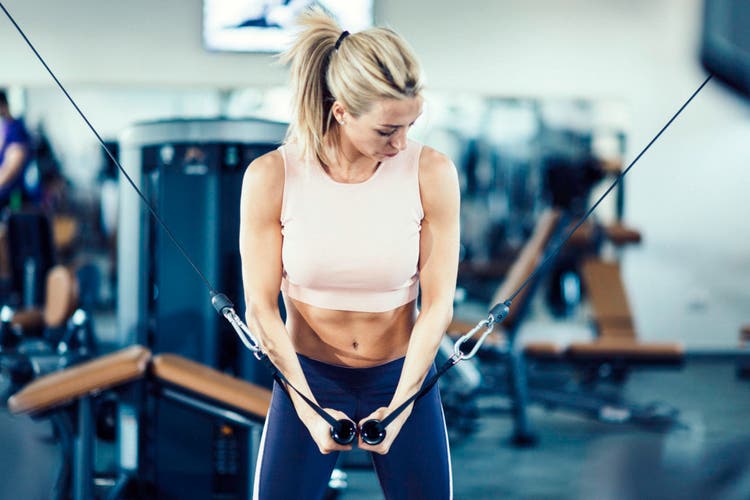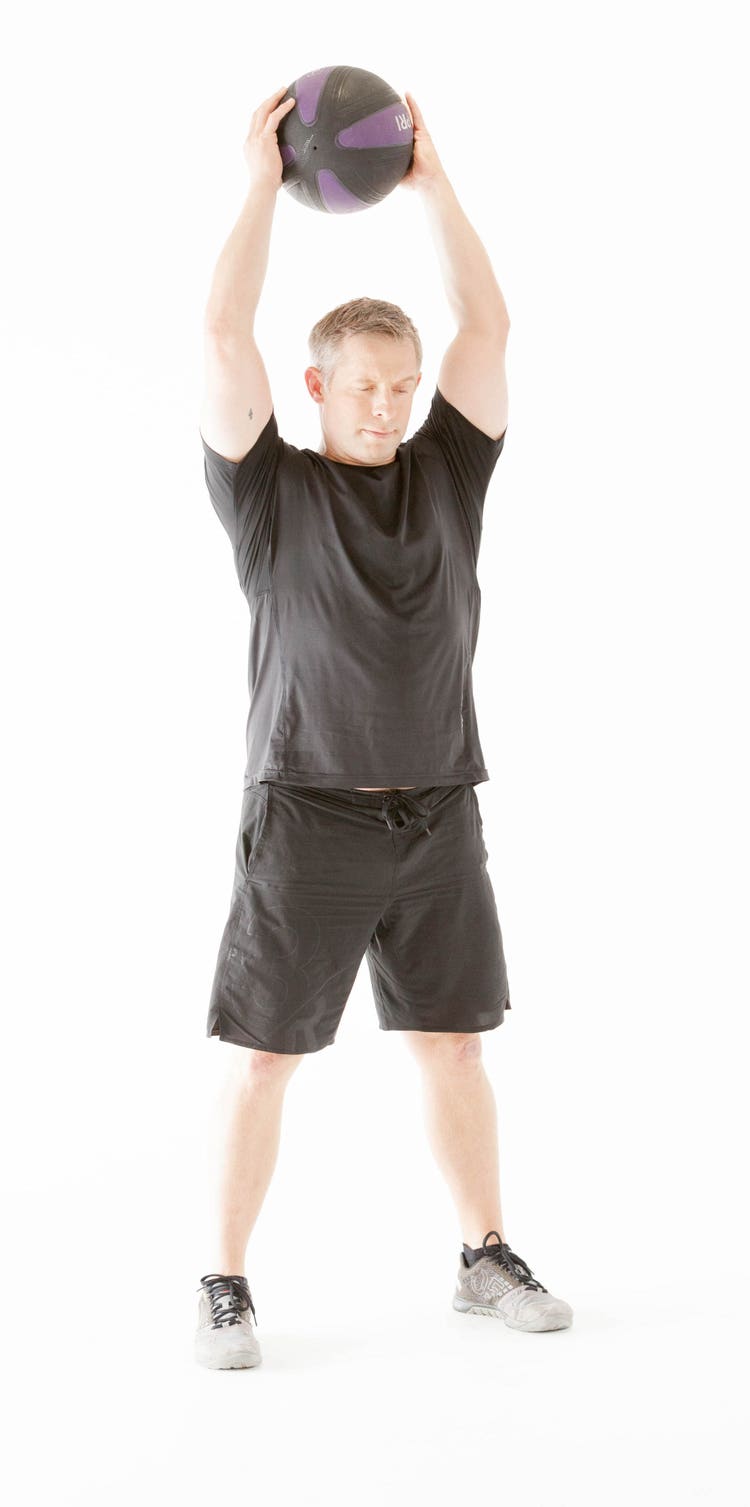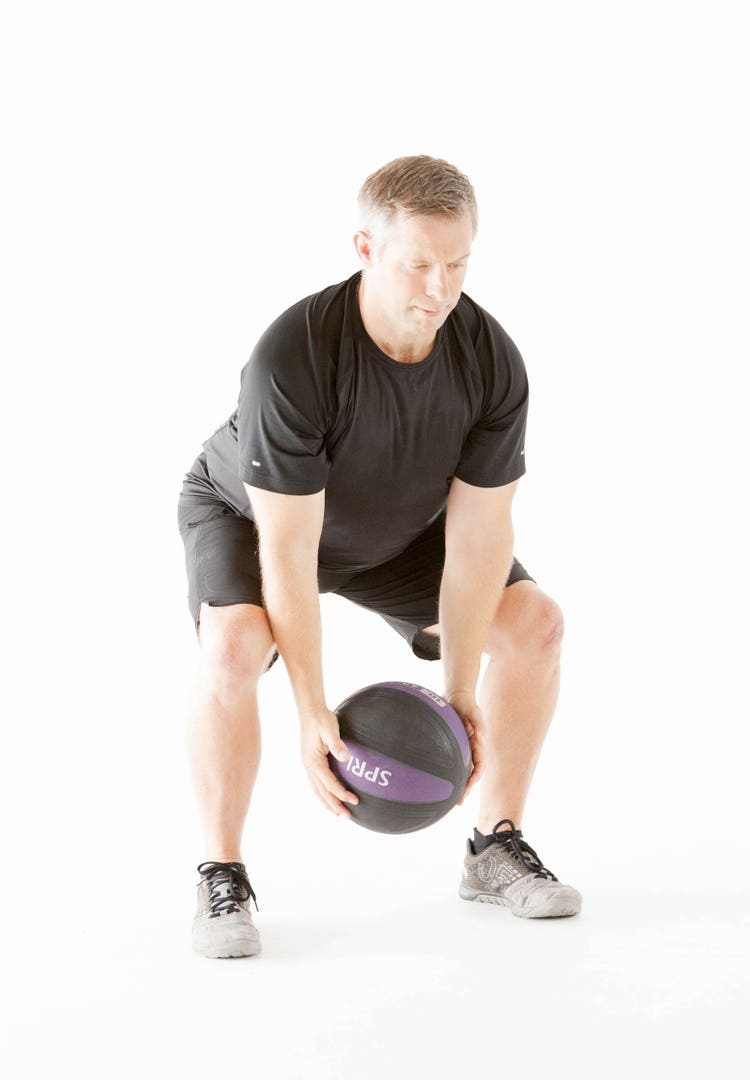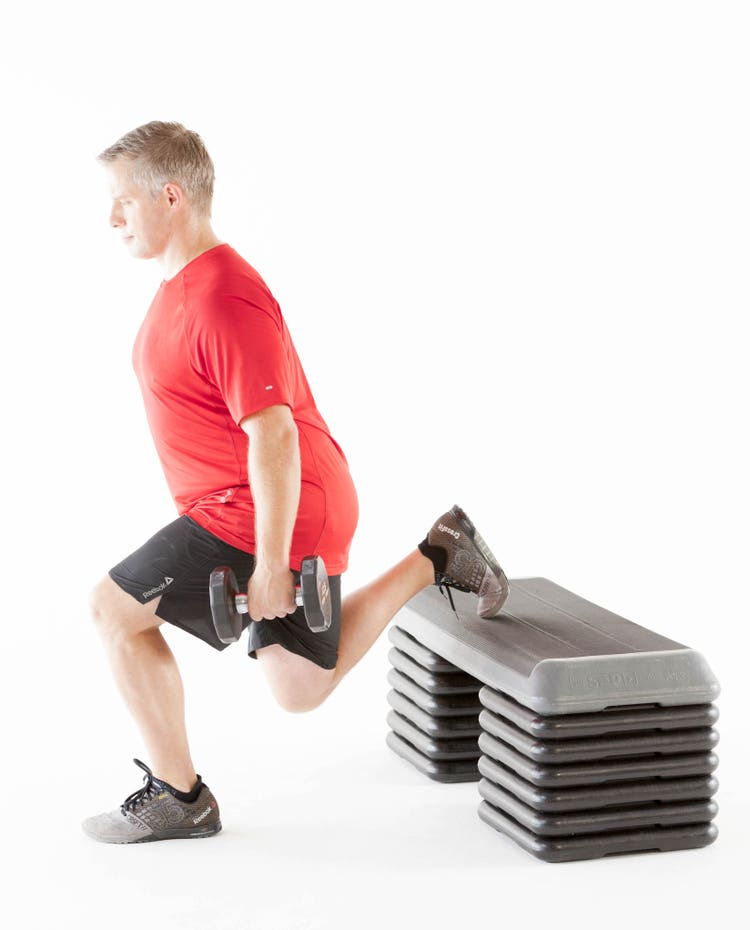Nine Pieces of Underused Workout Equipment That Can Work for You

The funny thing about the fitness industry is that, for some reason, everyone is always looking for the next “big thing”—specifically a new or different way to work out that will finally deliver the results that you, the end-consumer, want. From elastic bands for activating your glutes in barre classes to the latest technology for tracking the number of calories you burn during indoor cycling rides to unique methods for lifting old-fashioned weights during high-intensity workouts, it seems like there is a never-ending stream of information about the latest, greatest fitness trend that you should be doing.
“Lift heavy weights.”
“Don’t lift anything heavier than 3 pounds.”
“Exercise at the highest intensity possible.”
“Don’t train too hard so you stay in the fat-burning zone.”
“Indoor cycling is the best workout to improve your aerobic fitness.”
“Indoor cycling can make your leg muscles big.”
Any of these sound familiar?
You get the idea—there is so much noise out there that it can truly be a challenge to find the right type of training program for your specific needs.
In my 20 years of coaching workouts and designing fitness programs for clients, I can easily say that many fitness consumers are guilty of the same thing—jumping around from workout program to workout program looking for a single solution instead of doubling down on what will provide the best results: hard work. Don’t keep jumping from program to program in the futile hopes of discovering the one thing that will be the panacea (thank you, SAT vocab prep) for your workout needs. The fact is there are no easy ways to make fitness work for you. Ignore all the hype about the newest fitness fads. Here’s a little secret from a fitness industry insider that is the absolute truth: It’s how you use the equipment, not the equipment itself, that can lead to the results that you want from your workouts. More specifically, use the movements and equipment that will consistently challenge you by engaging most of the major muscles in your body.
Here’s another little secret that is 100 percent true: The equipment that can help you get results is already in the gym; you just have to know how to use it correctly. In addition, you have to use it at the right intensity so that you’re exercising hard enough to make talking difficult and do it frequently enough, at least three to four times per week, so that it changes your body.
Below is a list of tried-and-true training equipment that is often overlooked or misused by the typical health club consumer, but when used the right way and at the right intensity, they can be extremely beneficial.
Equipment
Upper-Body Ergometer
Most health clubs have at least one of these machines tucked away somewhere in the cardio area. It looks like a set of bicycle cranks on a stand that you use with your arms instead of your legs. The benefits of movement is specific to the muscles involved, which means that no matter how much you use your legs for traditional cardio drills like cycling, walking or running, your arms are receiving minimal benefits. Using your arms for aerobic training can improve mitochondrial density in the involved muscles, which is important for cell health while helping expend energy for weight loss. The upper-body ergometer is rarely used by other members, so if the gym is crowded and you’re looking for a workout to help burn calories, then it’s definitely worth consideration. The next time your favorite cardio piece is already being used, try just five minutes on the upper-body erg and you’ll get your heart rate up in no time.
Rowing Machine
Because of the inclusion in high-intensity conditioning programs, the indoor rowing machine has become more popular in recent years, but it is still an underused piece of fitness equipment that can help you get the benefits of total-body cardiovascular training in an extremely efficient amount of time. One of the cool benefits of this machine is that you can measure your workout in either watts (power), calories (energy), distance (meters) or time, giving you a variety of options for measuring your performance. Tracking how many meters you can row or how many calories you expend in a specific period of time gives you direct feedback for monitoring your progress. To receive the greatest benefits from the rowing machine, proper form using your leg, back, shoulder and arm muscles is essential, so it is suggested to ask a member of the fitness staff to learn how to use this machine correctly.
StepMill (rotating staircase)
Most commercial gyms have at least one of these in their cardio area. It basically looks like a rotating staircase. The workout is equivalent to running up a down escalator, which is actually extremely effective for elevating your heart rate. Here’s a fitness industry insider tidbit: These machines are so effective that many personal trainers and fitness instructors often use them for their own workouts when they’re trying to do the most amount of work in the shortest amount of time.
Professional tip: When it comes to cardio training, one thing that I have told clients for years is that rather than spend 30 to 40 minutes on one machine, pick three or four machines and spend 10 to 15 minutes on each. This can help reduce boredom and will keep you working hard because different machines challenge the body in different ways.
Medicine Balls
Having spent a number of years working in health clubs, I can honestly say that the medicine ball is one of the most underused or misused pieces of equipment in the gym. The traditional approach to working out is to do one movement or train per body part at a time, which is necessary for people training for a bodybuilding-type contest, but it is not an effective use of time for the average person. One benefit of using a medicine ball is that it allows you to perform a wide variety of multi-planar movements with resistance, which is essential for developing strength in a number of muscles at the same time. Another benefit is that the medicine ball is extremely portable and requires only a minimal amount of space, so learning how to use it properly can provide you with options for when the gym is crowded or if you want to catch a quick workout at home.
For example: The medicine-ball lift, during which you move the medicine ball from your hips to shoulders while using your legs and arms, can help you strengthen core muscles while elevating your heart rate.


Medicine-Ball Lift
- Stand with your feet shoulder-width apart. Hold the medicine ball in both hands in front of your waist.
- Push your hips back and keep your spine straight as you lower into a squat.
- Press both feet into the ground, and as you return to standing, swing the medicine ball from in front of your waist to an overhead position (so that it is directly overhead when you are standing upright).
- Lower the medicine ball back down and repeat for 10 to 12 reps. Rest 45 seconds and complete three sets.
Cable Machine
The good news is that most health clubs have cable machines with pulleys that can be adjusted to a variety of different heights. The bad news is that these are mainly used for only three exercises: triceps pushdowns, chest flyes and kneeling crunches. Cable machines allow you to train your entire body from a standing position, which challenges different muscles to work together at the same time, thereby maximizing your training efficiency. Cable movements such as two-hand presses, chops (hi-to-low or low-to-hi), one-arm presses, single-arm rows to single-leg balance or single-leg Romanian deadlifts are a great way to get a total-body workout using just a single piece of equipment.
Stability Balls
These oversized playground balls have been in gyms for a while, but more often than not they are used only for crunches, whether sitting on top of the ball or lying on the ground with your lower legs up on the ball. The cool thing about the stability ball is that it allows you to train your body in multiple directions and from different angles. This variety is essential for developing strength between different muscles, which can help create the appearance of a leaner physique. Rather than limiting yourself to crunches, the next time you’re looking for ideas for how to use a stability ball, consider movements like knee tucks, pikes, Russian twists or hamstring curls.
Jump Boxes
NO, these are not a place to set down your drink, towel, phone, keys, etc. Jump boxes are designed for plyometric jumps but are also great for step-ups and split-leg squats. Boxes provide a more stable jumping surface than a step or a pile of plates stacked on one another. (I’ve seen both topple when someone lands on top.) One note about using this piece of equipment: The proper (and safest) way to do jumps on a box is to jump up and then STEP DOWN. The reason for using a jump box is to focus on exploding off the ground and landing on a higher surface, minimizing the impact of gravity on the body. Jumping down backward off a box is unsafe and simply unnecessary. If you want extra explosion in your jump, do a little pre-jump and land on the floor in front of the box, then as your feet hit the ground, explode up to the top of the box, then step back down and repeat for four to six repetitions. For doing step-ups or split-leg squats, use a box that is about knee height. There are a variety of step-up options, including to the front, to the side or crossing one leg in front of the other.

- Hold one dumbbell in each hand and stand facing away from a jump box that is about knee height.
- Place the toes of your right foot on the box and keep your left foot in front of your body so that it is firmly planted into the floor.
- To lower yourself, sink down and back toward the box so that you are placing most of your weight in your left hip.
- At the bottom, press your left foot into the floor and pull back on your left knee to return to the starting position.
- Perform eight to 10 reps, then switch legs, rest 45 to 60 seconds and do two to three sets on each leg.
Kettlebells
These “cannonballs with a handle” have been used in commercial fitness facilities for more than a century but are often misused by the average fitness enthusiast. Because they use many muscles and challenge different parts of the body to work together to create coordinated movement patterns, kettlebell exercises like the swing or the overhead carry provide a number of benefits that other equipment simply cannot. The good news is that many fitness facilities have kettlebells available on the gym floor, so if your favorite weight bench or squat cage is in use, simply pick up a kettlebell and get to work. The challenge to using kettlebells is taking the time to learn proper form and technique, making investing in sessions with a qualified personal trainer a must before attempting to use them on your own.
Try this kettlebell workout for a quick, total-body sweat and to familiarize yourself with the kettlebell.
Your Own Body
This is not a joke. One of the most underused and, often, misused pieces of equipment is connected to the fingers using the device you’re reading this on. You already have everything you need for a great workout. Knowing how to position your body so that different joints and muscles are properly engaged in an activity gives you the ability to do an entire workout with just a little bit of space. Add the reverse crossover lunge to your next workout, for example.
Because it uses almost all the muscles of the thighs and upper legs, this is an effective move for both strengthening muscles and improving mobility of the hip joints. In fact, this move is used by many professional athletes to warm up their hips before training or competition.
Reverse Crossover Lunge
- Stand with your feet hip-width apart.
- With your right foot, step back behind your left leg. (If you are facing directly forward, think about placing your right foot in the 7 o’clock position.) Lower yourself down with your left hip.
- To return to standing, press your left foot into the floor and push your left hip forward as you swing your right leg back to the starting position.
- Perform eight to 10 reps with your right leg, then switch sides. Rest 45 to 60 seconds and complete three sets.
The next time you read an article about a new piece of fitness equipment or the hottest new workout class craze, stop and think about whether it really engages your entire body. The human body was designed to move in multiple directions. Any fitness program that you do should do the same and challenge you to move your body in a variety of different ways at a number of different speeds.
There are no easy solutions when it comes to fitness, but it is important to know that hard work and consistency pay off. The one fundamental truth is that the best movement for you is that one that properly challenges you and that you enjoy doing, because if it isn’t enjoyable, you won’t do it, no matter how good it might be for you. It may take some time to find the best workout for your needs, but once you do, you will know it.
Photo credit: Microgen, Thinkstock